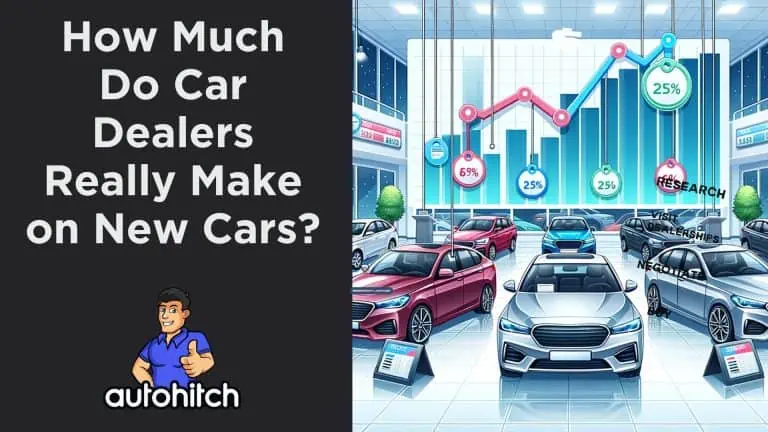When buying a new car, many car buyers are wondering how much profit a car dealership makes on the sale. The answer is more complex than you might think.
On the surface, it appears car dealers make money simply from the difference between the MSRP (sticker price) and the invoice price (what they pay the manufacturer).
However, there are many additional factors beyond the invoice price that provide opportunities for car dealerships to generate profit on new vehicle sales.
Relevant Articles To Read:
- How Much Will Dealers Come Down on a Used Car?
- How Much Do Dealers Markup Used Cars
- Out The Door Price
- How Much Cheaper Are Cars At Dealer Auctions
Table of Contents
Car Dealerships Invoice Price vs MSRP
The dealer invoice price is what a car dealership pays the manufacturer for a new vehicle.
This is typically a few percentage points lower than the Manufacturer’s Suggested Retail Price (MSRP), which is the sticker price listed on the window.
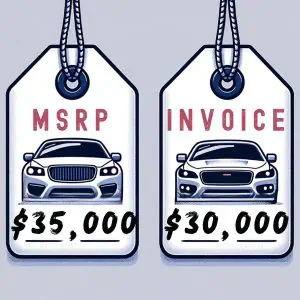
For example, if the MSRP for a new sedan in 2023 is $35,000, the dealer invoice might be $33,000.
So, at first glance, it appears the dealer has a potential profit of $2,000 on that new car sale.
| Description | Amount |
|---|---|
| MSRP | $35,000 |
| Dealer Invoice | $33,000 |
| Potential Profit | $2,000 |
But here’s where it gets more complicated –
The difference between MSRP and invoice has shrunk over the years. Whereas it used to be common for invoices to be 10-15% lower than MSRP, today it averages around 3-8% lower across brands.
This means car dealers have less wiggle room for profit on the difference between MSRP and invoice alone.
However, there are additional ways car dealerships can turn a profit on new car sales.
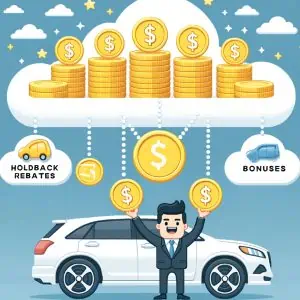
Manufacturer Incentives and Holdback
Incentives from the manufacturer provide car dealers an opportunity to earn extra profit. These come in a few different forms:
- Holdback – The manufacturer returns a small percentage (around 2-3%) of the MSRP or invoice cost back to the dealer after the car is sold. This helps dealers cover expenses.
- Rebates – Cash rebates that manufacturers sometimes offer on certain models or VINs, usually at certain times of the year to boost sales.
- Bonuses – Car dealers can earn bonuses if they hit certain sales targets set by the manufacturer. This incentivizes them to push specific makes and models.
Car buyers aren’t always aware of these incentives, which allow the car dealer to pad their bottom line and potentially negotiate more on the sale price since they know they’ll earn profit through the incentives.
Finance and Insurance (F&I) Products
The finance and insurance department (F&I) at a car dealership also presents opportunities for increased profit on new vehicles:
| Product | Description |
|---|---|
| Financing | The dealer can earn interest income by providing financing for the vehicle through ties with lenders. |
| Extended warranties | Highly profitable for dealers, these provide additional protection beyond the factory warranty. |
| GAP insurance | Covers the difference between the value of the vehicle and the remaining loan balance if it gets totaled. Another money maker. |
| Other add-ons | Things like security systems, paint protection, and interior protection packages generate significant backend profit. Car buyers should know what they want ahead of time before getting to this phase. |
With consumers financing over 85% of new cars, the F&I department has become a huge profit center for car dealerships that buyers should be aware of.
What is the Average Car Dealership Profit on a New Car
Okay, so now that we’ve covered the various profit streams, how much profit can a car dealer expect to make on average in 2023?
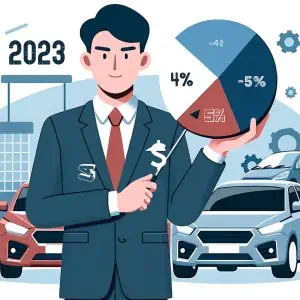
According to data from the National Automobile Dealers Association (NADA), the average gross profit per new vehicle sold is around 4-5% of the selling price.
For example, if the average new car sells for $40,000, the average gross profit for the car dealer would be around $1,600 to $2,000.
| Metric | Amount |
|---|---|
| Average New Car Price | $40,000 |
| Average Gross Profit Percentage | 4-5% |
| Average Gross Profit Per Vehicle | $1,600-$2,000 |
Of course, this varies significantly based on the brand, model, and location of the dealership. Luxury cars like Mercedes and BMW tend to have higher gross profit margins around 6-8%. High-volume dealerships can also negotiate better pricing from manufacturers.
After covering expenses like staff salaries, rent, and other overhead costs, the typical car dealership sees net profit margins of only 1-2% – or around $400-$800 per new car sold in our example.
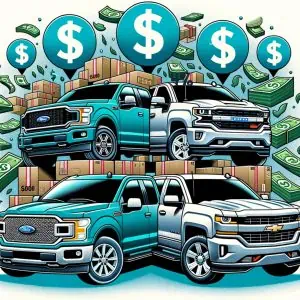
Car Dealership Size and Brand Are Key Factors
While those profit margins may seem low given the high cost of vehicles, the key is volume. Selling 200-300 cars per month quickly adds up. Larger car dealerships have more negotiating power with manufacturers and move more inventory.
Higher-end brands also equate to larger profit margins thanks to more flexibility on pricing. The average gross profit on a loaded Ford F-150 or Chevy Silverado easily exceeds $5,000 considering options and packages.
Summary
So, the short answer is that car dealership profits on new cars vary quite a bit based on these key factors. But car buyers should still enter negotiations armed with knowledge of where car dealers have opportunities to maximize profit.
Sources:
- https://www.easycars.com.au/latest-news/5-factors-that-affect-profitability-for-motor-dealerships/
- https://modera.com/automotive/car-dealership-profitability/
- https://www.nerdwallet.com/article/loans/auto-loans/dealers-profit-off-financing
- https://finmodelslab.com/blogs/profitability/car-dealership-new-vehicles-profitability

